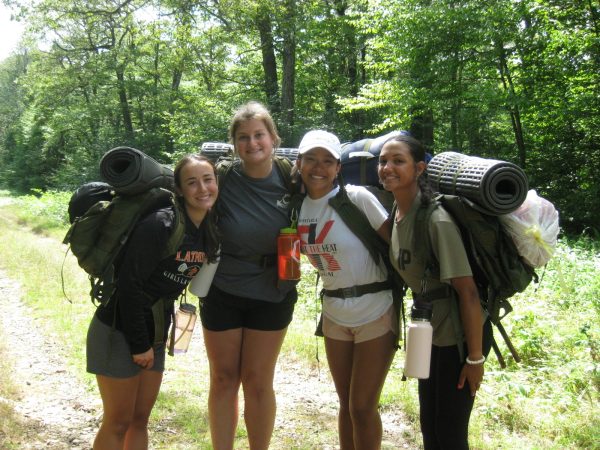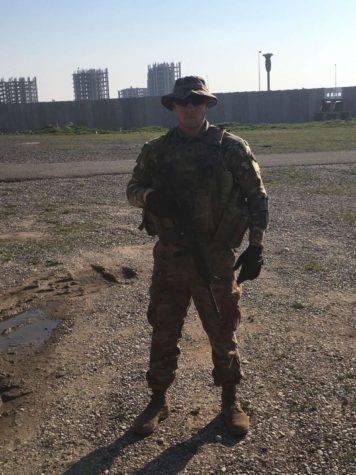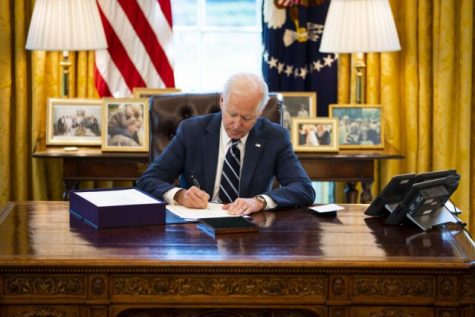Hurricane Relief
“The 2017 hurricane season has been a challenge for forecasters. For the later part of the summer, forecasters have constantly been monitoring tropical waves off of Africa that could potentially impact the U.S.,” said Connor Belak, former student who now attends Ohio University for meteorology. Belak graduated in 2015 and was widely known around the school for his knowledge of the weather and enjoyed making his own predictions.
Among some of these tropical waves came the devastating hurricanes Harvey and Irma.
Hurricane Harvey made history on August 25 when it made landfall in Texas as the first major hurricane [Category 3 or higher] to hit the United States in nearly twelve years. Harvey began its journey as a minor tropical storm in the Caribbean Sea, but it quickly diminished. After the remnants of Harvey moved into the warm waters of the Gulf of Mexico, it rapidly strengthened. Within 36 hours it was a Category 4 hurricane. Many forecasters were shocked by this explosive intensification.
The coast of Texas was left with little time to prepare for the 130 mph winds and rain. Around 10 pm on the night of Friday, August 25, Harvey’s eye came ashore over San Jose, Texas. From there the system barely moved from its position over Southern Texas for days and drenched the coast for days. Harvey caused storm surge of up to 12 feet in some areas and dropped 40 inches of rain in 48 hours. In Houston, a whopping 51.88 inches of rain was recorded, setting a new North American record. When Harvey finally released its grip on the Texas coast, it spun back out over the Gulf, still a tropical storm, and made its final landfall in Cameron, Louisiana.
Josh Strecker is a recently new student at Greater Latrobe. For years his family lived just west of Houston at The Woodlands. He said that many friends of his helped to rebuild houses by tearing out drywall and repairing the many homes that were destroyed. “I wish I could be down there helping because I know many who are my age are helping,” Strecker said. The Woodlands High School, 30 miles inland, was filled with displaced families. He said, “The people of Texas are very resilient.” Even at The Woodlands the San Jacinto River flooded the area, which was about a mile from his home when he lived there.
Strecker actually experienced a major storm, Hurricane Ike in 2012, which was nothing compared to Harvey recalled Strecker. He said, “Ike seemed more of an inconvenience. Harvey has much more property damage.” He remembers the power was out for a week or two and that he went to stay with relatives in San Antonio, nearly 200 miles from his home. He said, “Without power we played board games to the point of getting bored.” Yet the people of Texas continue to rebuild as to those in Florida.
Days after Harvey’s catastrophic landfall, another monster storm by the name of Irma, was brewing in the Atlantic. Irma began its life as a record setter. It formed alongside two other tropical cyclones within the Atlantic Basin, Jose and Katia, which had not happened since 2010. On August 31 Irma was proclaimed a hurricane and by September 5 it was a category 5 storm with sustained winds of 185 mph. This made it the strongest Atlantic hurricane ever outside of the Gulf of Mexico and Caribbean Sea. Along with this, it was dubbed the longest sustained Category 5 ever, lasting up to 37 hours.
No island in the Caribbean was left untouched by this 425 mile wide storm as it blasted through as a Category 4 and 5. By Friday, September 8, Category 5 Irma scraped along Cuba’s Northern coast, and clung to it for an entire day.
Two days after moving away from Cuba, with winds of 130 mph, Irma’s eye then impacted Cudjoe Key in Key West, Florida. This was the first time in history that two category 4 hurricanes had made landfall in the U.S. in the same year. Continuing past the Keys, Irma set it sights on Marco Island, Florida. There it made its final landfall as a Category 3 with winds reaching 120 mph.
The storm did not end here. It instead moved up the West Coast of Florida and ripped apart cities on all sides of the state. It produced strong winds, rain of up to twelve inches, and storm surge as high as seven feet from Florida to South Carolina.
Over a week after Irma’s landfall, Alexandria Potter, who has a house in Charleston, South Carolina stated, “They’re still dealing with flooding because it doesn’t seem to be draining.” She also reported that her house, more than 600 miles from ground zero, received terrible flooding and prolonged power outages.
With Hurricane Irma generating more energy than all eight previous storms, including Harvey, and prompting 6,300,000 people to evacuate, it will surely be one for the record books.
Altogether, Harvey and Irma have caused an estimated $290 billion dollars in destruction. Damage was felt from Texas to South Carolina. Houses were under water for days, over 16 million were without power for up to and over a week, and many did not have fresh drinking water.
Our school immediately dove head first, quickly pulling together fundraisers to support the relief efforts. On September 9, the Journalism and Yearbook classes came together to hold a carwash in front of Rusbosin Furniture. $100 was contributed towards hurricane victims, which was matched by Rusbosin Furniture. Along with this, the Interact club donated $200 towards relief for each hurricane. In addition, as the wildcats took the field on Friday, September 22 to take down Penn Trafford, the two schools’ junior and senior high student councils came together to tackle Hurricane Harvey and Irma. Together they worked to collect donations to aid in the recoveries of schools affected by the storms.
“Although our school may not be affected by the hurricanes, it is important to remember the schools that were affected,” said Keeley Thomas, senior high student council member, “Despite the distance between us, we are all here to support the common goal of an education.”
Hurricane season extends throughout the entire month of November and will continue to pose a threat. While we can not prevent natural disasters like these from occurring, we can act as a crutch for those in a time of destruction and despair, and we will come out stronger as a nation.
To find more charities to donate to for disaster relief go to www.charitynavigator.org
My name is Molly Bobik. I am a Sophomore and a first year journalist. I have been an avid swimmer and softball player since the age of seven, and...






